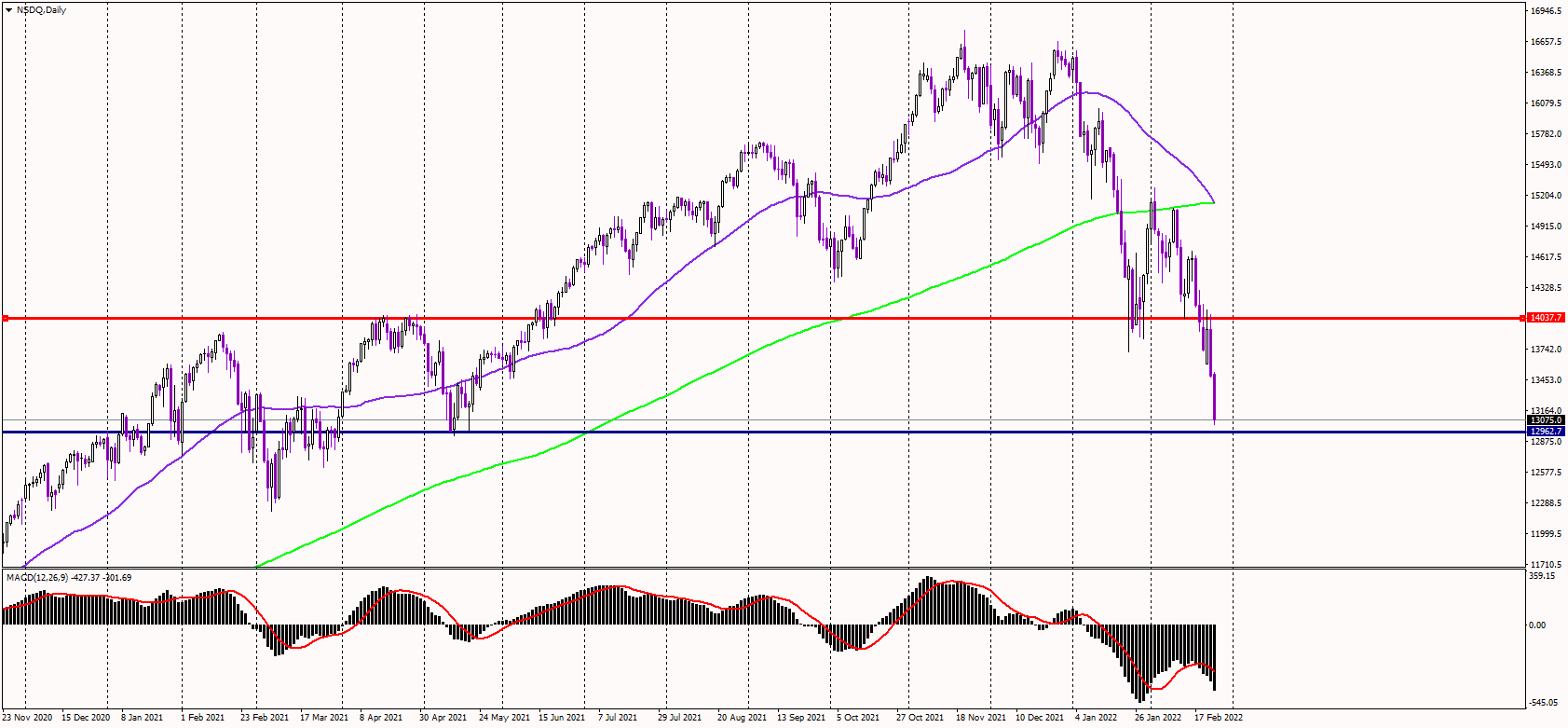Nasdaq Plunges 10% From December Peak: What's Driving The Bearish Rebound?
The Nasdaq, once a bastion of optimism and growth, has experienced a significant bearish rebound, plummeting 10% from its December peak. This sharp decline has raised concerns among investors, analysts, and traders, all wondering what is driving this bearish momentum. As the largest stock exchange in the United States, the Nasdaq's performance has a significant impact on the global market, and its recent downturn has sparked intense interest. In this article, we will delve into the key factors contributing to the Nasdaq's bearish rebound, exploring the possible causes and potential implications for investors.
The Nasdaq's decline has been a surprise to many, considering the robust performance of the tech sector in the past few months. The index, which is home to some of the world's most influential tech companies, including Amazon, Apple, and Google, has seen a significant pullback, wiping out billions of dollars in market value. This sudden reversal has left many investors scratching their heads, wondering what could be driving this bearish momentum.
One of the primary factors contributing to the Nasdaq's decline is the rising interest rate environment. As the Federal Reserve continues to tighten monetary policy, interest rates have increased, making borrowing more expensive for companies and consumers alike. This has had a negative impact on the tech sector, as many companies rely heavily on debt to fund their growth initiatives. Higher interest rates have also led to a decline in the value of technology stocks, which have historically been sensitive to interest rate changes.
Key Indicators Pointing to a Bearish Rebound
Several key indicators suggest that the Nasdaq's decline is more than just a minor correction. Here are some of the most notable indicators:
- Moving Averages: The Nasdaq's 50-day moving average has crossed below the 200-day moving average, a bearish reversal that signals a decline in investor sentiment.
- Relative Strength Index (RSI): The Nasdaq's RSI has fallen below 30, indicating a significant over sell in the market.
- VIX Index: The CBOE Volatility Index (VIX), a measure of market volatility, has increased, indicating increased uncertainty and fear among investors.
These indicators suggest that the Nasdaq's decline is not just a minor correction, but a sign of a more significant bearish trend.
What's Driving the Decline?
Several factors are contributing to the Nasdaq's decline, including:
- Valuation Concerns: The Nasdaq's valuation, as measured by the price-to-earnings ratio, is high, making it vulnerable to a decline.
- Economic Slowdown: The global economy is experiencing a slowdown, which has led to a decline in corporate earnings and revenue growth.
- Trade Tensions: Trade tensions between the US and China have increased, leading to a decline in global trade and economic growth.
Potential Implications for Investors
The Nasdaq's decline has significant implications for investors, including:
- Losses: The Nasdaq's decline has resulted in significant losses for investors, with many seeing their portfolios decline by tens of thousands of dollars.
- Opportunities: The decline also presents opportunities for investors, as the market is now oversold, making it a potential buying opportunity.
- Market Sentiment: The Nasdaq's decline has led to a shift in market sentiment, with many investors becoming more bearish, which could lead to further declines.
What's Next for the Nasdaq?
As the Nasdaq continues to decline, investors and analysts will be watching closely for signs of stabilization or reversal. Some key factors to watch include:
- Federal Reserve Decisions: The Federal Reserve's next interest rate decision will be closely watched, as it may impact the Nasdaq's performance.
- Corporate Earnings: Corporate earnings reports will be closely watched, as they may impact the Nasdaq's performance.
- Global Economic Data: Global economic data, such as GDP and inflation rates, will be closely watched, as they may impact the Nasdaq's performance.
Conclusion
The Nasdaq's decline has significant implications for investors, and as the market continues to evolve, it's essential to stay informed and adapt to changing market conditions. By understanding the key factors driving the Nasdaq's decline, investors can make informed decisions and navigate the market with confidence.
Loving Auntic Free
Yelena Bivol
Is Justin Bieberied
Article Recommendations
- Piddy Passed Away
- Who Isavid Muir Married To
- Chaun Woo Parents
- Lane Garrison
- Luke Bryan Weight Gain
- Kaitlan Collins
- Esownload
- Breckie Hill
- Abby Phillipalary
- Judd Nelson


![Bitcoin plunges—now down 47 percent from December peak [Updated] - Ars](https://cdn.arstechnica.net/wp-content/uploads/2018/01/Screen-Shot-2018-01-16-at-1.38.12-PM-1440x972.png)
